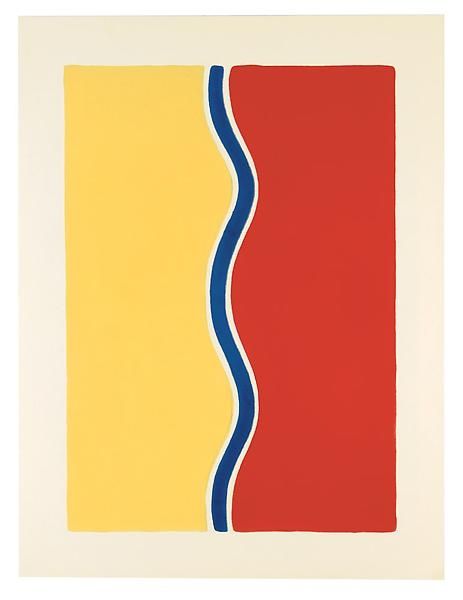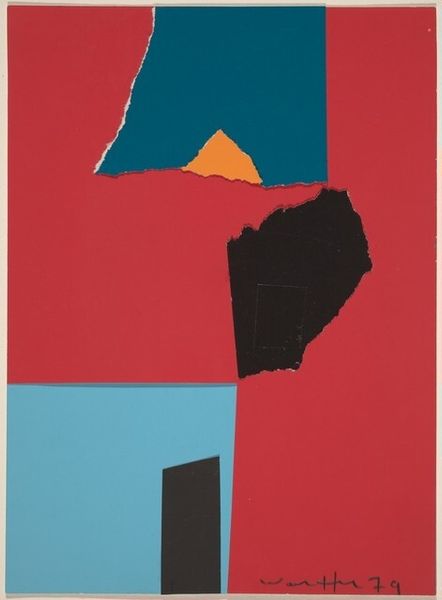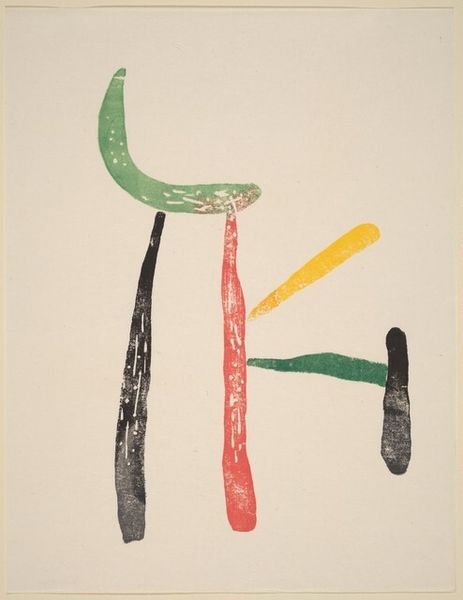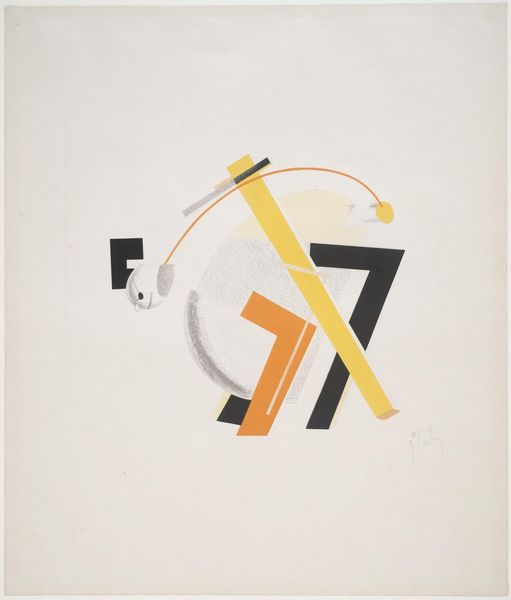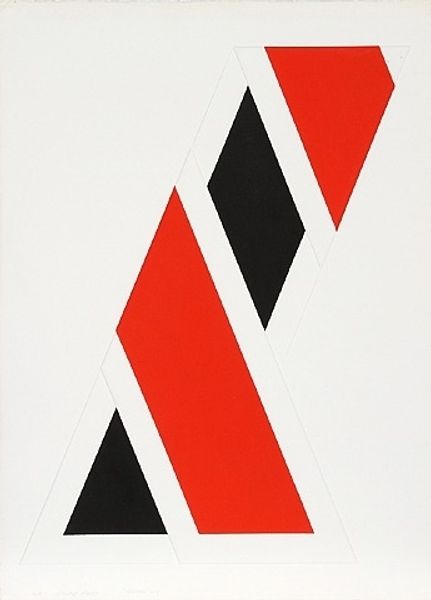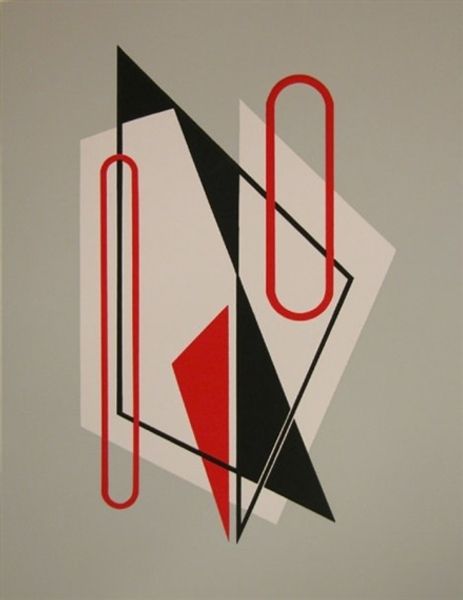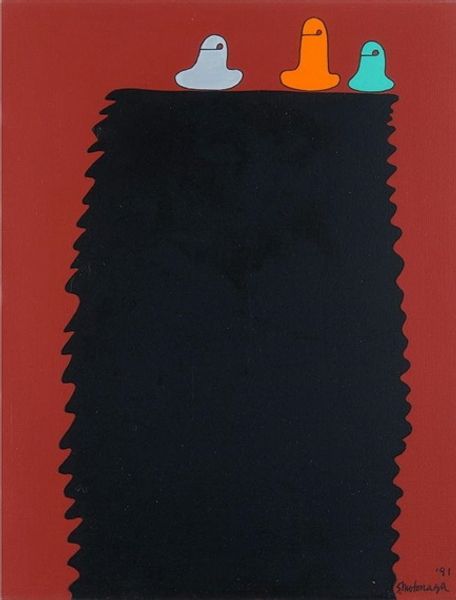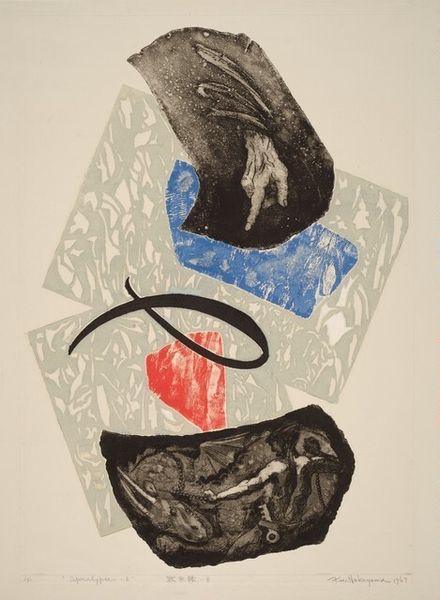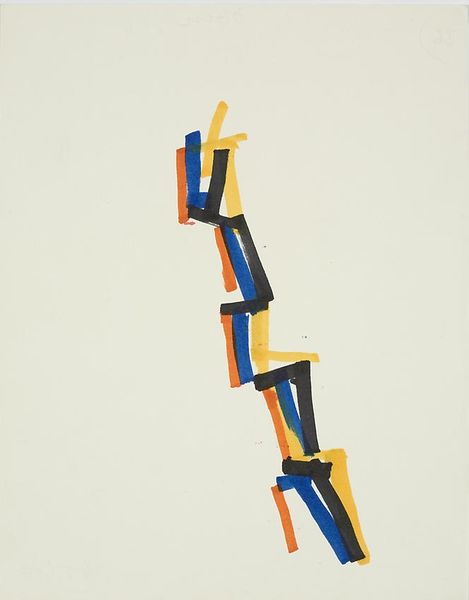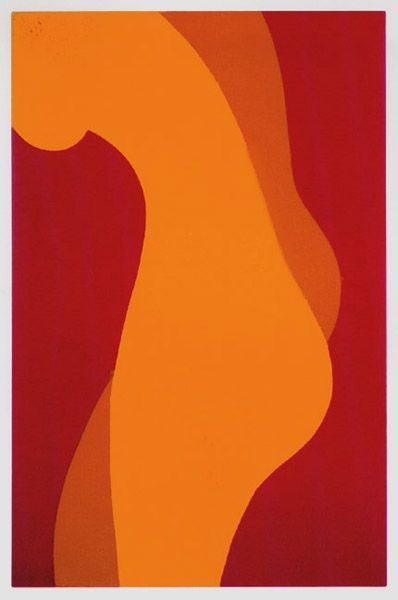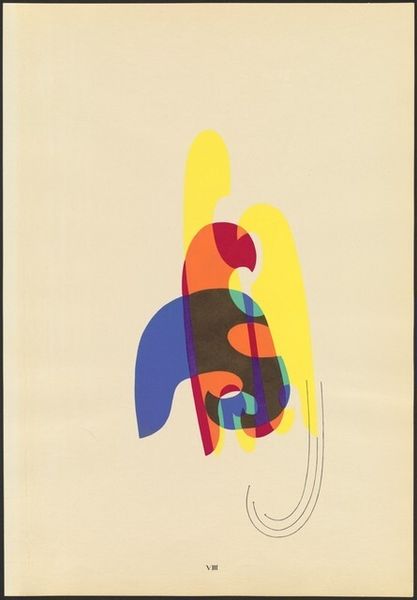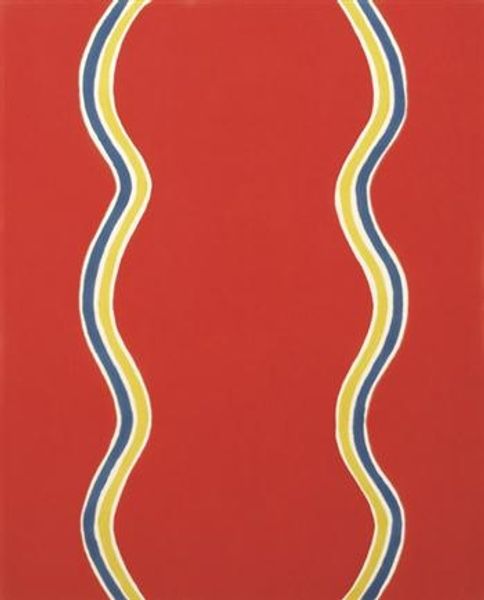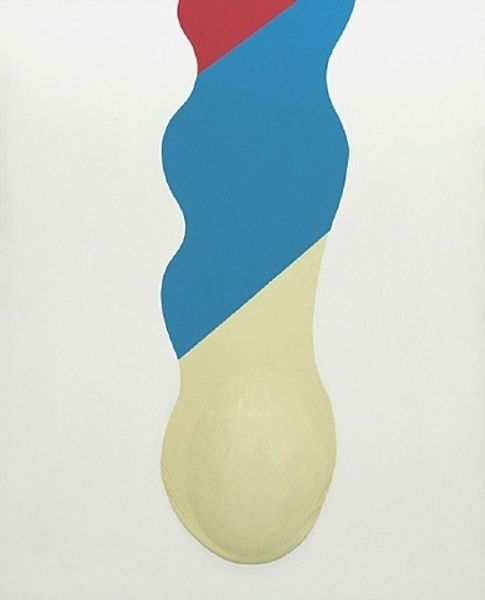
Copyright: National Gallery of Art: CC0 1.0
Curator: Here we have Larry Spaid’s "Series I-D-'72'," created in 1972. It is a print demonstrating the principles of Pop Art. Editor: I'm struck by its simplicity, almost austere. The contrast of bright red and purple against the black square feels… unbalanced, but intentionally so. Curator: The piece reflects the broader context of Pop Art, which questioned established art values. Spaid's choice of geometric abstraction is a direct reaction against the emotionalism that preceded it. This style uses pure forms without any suggestion of spatial depth or modeling. It also references art as the intentional product of a cultural system. Editor: Absolutely, and that flatness rejects traditional hierarchies, doesn’t it? There’s a subversive element, a sense of accessibility that was characteristic of the Pop Art movement’s dialogue with mass culture and visual advertising. The very basic, almost primal shapes demand an examination of one's role in society. Curator: Right, it uses bold colours and simplified shapes. This artwork also invites critical investigation of how abstract aesthetics influence art history and reflect their times, but the question becomes - is it effective? Can these methods accurately be described as either pop art, or as abstract expressionism? Editor: Well, think about the socio-political climate of the early 70s. There were the civil rights movement, second-wave feminism, and anti-war protests that forced artists to question representation, so this geometric tension may represent society’s. Its pared-down forms might symbolize systems breaking apart. The off-centered shapes against their stark backdrop can invite contemporary reflection of personal identity and external factors. Curator: So the forms function as mirrors, reflecting individual experiences within an evolving world. We should also note that as an emerging printmaker, the artist may not yet have mastered their approach in order to convey that complex message. But his other art from that period demonstrates an interest in contemporary sociopolitical questions, yes. Editor: Agreed, Spaid's use of simple abstract shapes speaks to broader social and aesthetic considerations during a time of upheaval. Regardless of perfection, that act alone transforms how we appreciate prints as agents for political, social and creative changes. Curator: Precisely, Larry Spaid prompts reflection on not only what constitutes an artwork, but what function does the museum or the collector perform, now? Editor: These shapes stay with me as a powerful reminder that the artist uses simple visual forms, while creating new critical discourses. It pushes us to investigate our assumptions regarding identity and creative practices.
Comments
No comments
Be the first to comment and join the conversation on the ultimate creative platform.
